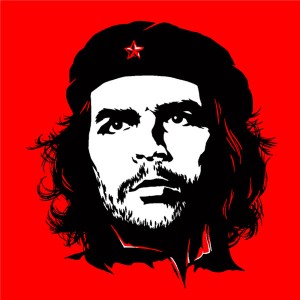Spoiler alert: the news here is good. No, actually, it’s great. Revolutions can be scary, and yes, lots of traditional structures get torn down during revolutions, but new structures spring up, and the ones that are springing up as we begin 2016 are very promising indeed.
And now, on with our tale of revolution…
Think about 1970 and imagine Gil Scott-Heron’s mindset when he wrote “The Revolution Will Not Be Televised.” He couldn’t have been more wrong, of course.
When did the revolution start? Howzabout December 12, 1975, when RCA launched Satcom-1, the first satellite used by broadcast and cable television to distribute content. In other words, the revolution didn’t start with the internet; the revolution started on television…20 years before the internet became a thing.
In 2016, the revolution is so far along already that you can watch it on “television” every single day. You can listen to it via “radio”. And, as (almost) always, there’s an app for that. You can read about the revolution on whatever digital doohickey you read news on instead of an old school newspaper. If you want to read all about what the revolution – the move to The Jetsons Future and media convergence – entails just click here.
Hand-in-hand with the revolution goes the Marshall McLuhan maxim that we call back constantly in these parts: the medium is the message. How have our changing mediums have changed the message – the content – that we create?
In television, we’ve gone from the theory of least objectionable programming to unique, serialized compelling product. (In 1970, would zombies – or even nerds – have been a thing?) Further, how much content is now being produced as, essentially, 12-hour long movielike creatures with the anticipation that the content will be consumed in readily bingeable multi-episode doses? The revolution even impacts promotion. How do you do publicity on a 12-episode series that some consumers will finish watching a day or two after release, while others may not watch for months?
Oh, and if film feels a little draggy and overcommitted to sequels and superheroes right now, the current quality of television programming will force a change in that in due time.
Look closely, and you’ll realize that radio is in a good place too. That reality is obscured by a couple key differences:
- So much of terrestrial radio derives its current value from non-unique content (in laymen’s terms, music) that it’s easy to miss this point; and
- Television distribution still looks much like it always did (with distribution via “television channels”, whether they’re broadcast, cable, or even OTT) while non-broadcast radio distribution already looks notably different (e.g. satellite radio with its differently-numbered channels and podcast aggregators).
Nonetheless, we see the increasing value of unique content via, among others, Adam Carolla and Serial. Unique audio-only content is more valuable than ever.
The most amazing development to appear already in the new year comes from print. Downton Abbey creator Julian Fellowes is telling his next story, “Belgravia”, in serialized novel form…via an app. It’s a ten-chapter “book”, with a new chapter dropping each week for a couple bucks (or “readers” can buy the whole thing for $14). Think about it: television is moving from serialized episodes to bingeable viewing. Meanwhile, print – which was always bingeable content – may be moving in the opposite direction.
The juicier development is this: with the change in medium from printed page to digital app, “readers” will get a different experience, including audio, music, video, character portraits (including a character family tree) and maps of Belgravia.
For fans, that means they’ll receive a much more complex, and presumably engrossing, product than would come with a printed book.
Do you realize what this means for professionals? It means jobs. In addition to the traditional solitary author working with an editor and perhaps a publicist and a layout specialist, you also have:
- Voiceover talent
- Videographers
- Actors
- Musicians
- Composers
- Graphic artists
- Programmers
Again, those are j-o-b-s.
Better, they’re creative jobs that arise from the need to implement the vision of an intensely successful content creator working in a media convergence world.
Like I said, the news here is great. Opportunity is everywhere if you just know how to look for it (or better still, create it).
Let’s wrap up with a review of the words of Gil Scott-Heron. Check out some of the lyrics of his “The Revolution Will Not Be Televised”:
- “You will not be able to stay home brother.” Again, let’s state the obvious: you’ll be to stay home, watch the revolution on your Roku, listen to it via your smartphone, and read about it on your tablet.
- “The revolution will not go better with Coke.” Maybe not, but the revolution will allow you to get a free Coke Zero using a television commercial and your Shazam app.
- “The revolution will be live.” Most of the revolution will not be live, it’ll be pre-recorded for binge viewing at your convenience.
Here’s to a revolting new year!



